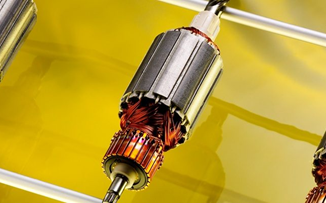
US ITER and its vendors are moving into a new fabrication phase for the toroidal field magnet system in the international ITER fusion reactor. Cabling and conductor fabrication are now underway in New Hampshire and Florida for the niobium-tin wire produced in the US. All of this fabrication effort is in preparation for delivering the final product in 2015 to the European Union.
As part of its contributions to the ITER project, the US is producing more than 4 miles of cable-in-conduit superconductor; other ITER partners will provide the remainder of the conductor. This conductor will encircle the ITER tokamak in a toroidal pattern, providing immense magnetic fields for confining 150 million degree plasma into a doughnut-like shape.
“Cabling is a standard industrial process, but when dealing with the scale of the ITER conductor it becomes a much greater challenge,” said Kevin Chan, a project engineer for the US ITER magnet systems at DOE’s Oak Ridge National Laboratory.
New England Wire Technologies in Lisbon, N.H., acquired and then carefully refurbished a cabling machine that could handle the weight of the spools and conductor. While typical spools are 12 inches in diameter, 40 inches is needed for the toroidal field conductor. So far, New England Wire has shipped both 100 meter and 800 meter test cables to Tallahassee, Fla., where High Performance Magnetics will take on integrating the cable into the final cable-in-conduit conductor.
The 800-meter-long jacketing bench at High Performance Magnetics runs parallel to a runway under renovation at Tallahassee Regional Airport.
The integration process at High Performance Magnetics required the development of a unique facility. Located next to a runway at the Tallahassee airport, an 800 meter long jacketing line was built to handle the insertion of cable into stainless steel tubing.
So far, High Performance Magnetics has successfully demonstrated compaction and spooling of a 100 meter sample length. The company is now preparing to test their process for the 800 meter lengths required by ITER. To achieve success, the jacketing line must maintain alignment and avoid excessive deformities as the tube is squeezed onto the cable. Past performance suggests that this is well within reach.
“High Performance Magnetics is using a novel, more economical, approach to the jacketing line. For quality assessment, HPM uses computer radiometry. Early tests of the jacketing process through the PVC pipes have shown great alignment. In contrast, more elaborate approaches, such as roller lines for moving the cable, present some challenges and increase costs,” said Chan.
The next step is to test the final product for any leaks in the narrow channel in the middle of the conductor that permits helium to be pumped through the magnets for cooling. To perform this test, HPM received delivery of a large vacuum vessel from Alloy Fabrications.
“This is an important accomplishment—shipping the vacuum vessel from Tennessee to Florida. It is 15 feet in diameter and required special routing to make its destination,” said Chan.



